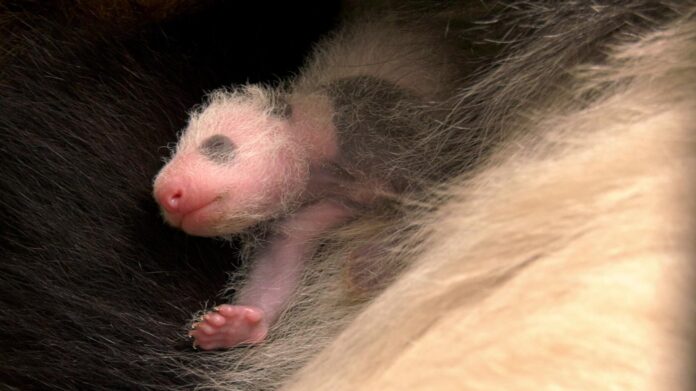The happy news reached Berlin in late summer: 22.08. brings panda mom Meng Meng Twins born in the zoo – and even the Governing Mayor congratulates.
It is only the second panda birth in Germany. But at first the little ones are still naked and pink – they only get their black and white panda pattern later.
We follow the development of the two baby pandas in pictures.
Here they are! The twins are born about an hour apart on a Thursday at 1:03 p.m. and 2:19 p.m.
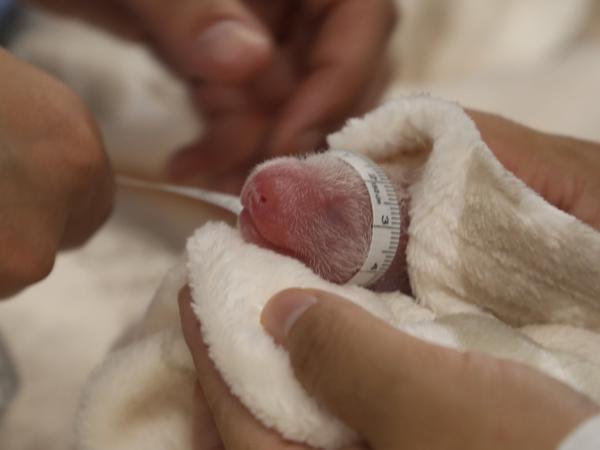
© dpa/—
“Both cubs are doing well and are lovingly cared for around the clock by their mother and the experienced panda team,” the zoo announced after the birth. Now it’s time to keep our fingers crossed for the first critical days.

© dpa/—
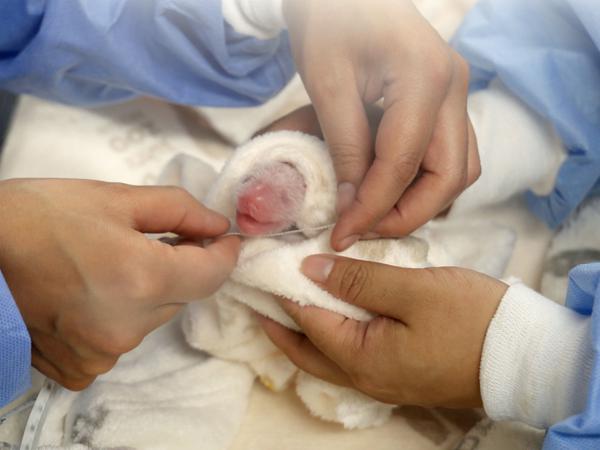
© AFP/HANDOUT
At birth, the twins are deaf and blind. According to the zoo, they weigh 169 grams and 136 grams respectively and are about 14 centimeters long – about the Size of a small guinea pig.
“I am relieved that the two were born healthy,” says veterinarian and zoo and animal park director Andreas Knieriem. “The little ones seem lively, and mother Meng Meng shows us all what the word ‘bear love’ means – she takes loving care of her offspring.” The zoo shares a video of its little new residents on Instagram.

© Sebastian Gollnow
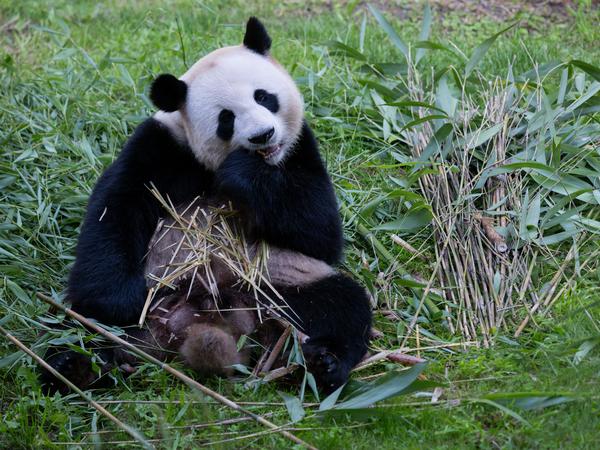
© Sebastian Gollnow
Meng Meng was on March 26 artificially inseminated. On 11 August Two heartbeats were then detected by ultrasound – the young were born just eleven days later. According to the zoo, the gestation period was 149 days.

© dpa/—
A few days after birth A zoo spokeswoman said: “The young animals are doing well so far. They are being cared for around the clock by the German-Chinese panda team and are always with their mother in turns.”
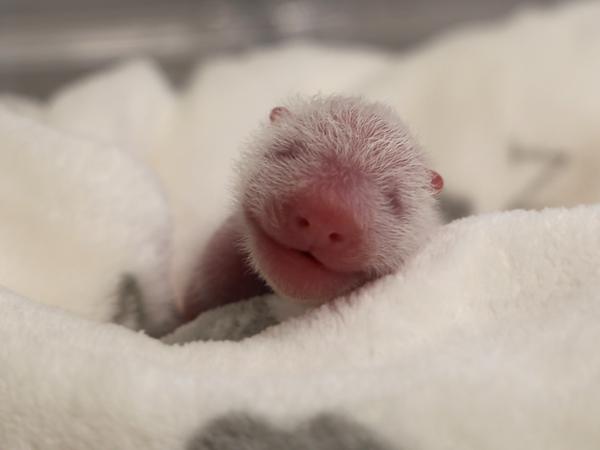
© AFP/HANDOUT
In the wild, a female panda can only raise one cub. If twins are born, which occurs in about half of the cases, this means that one cub dies. “In the zoo, we have the opportunity to save this cub,” said the spokeswoman. Since there are only about 1800 giant pandas in the natural habitat, every healthy young animal counts.
The zoo explains: “To ensure that both young animals grow up as naturally as possible, i.e. with mother’s milk and maternal care, the young animals take turns staying with their mother. The other young animal is in the incubator and sleeps during this time. When it wakes up and wants to drink, it meng mengs.” The animals each drink about ten times a day, so they switch about every hour.

© —/Zoo Berlin/dpa
Five days after birth There is good news from the zoo: Thanks to the nutritious mother’s milk, the little ones have regained their birth weight and have even gained a little weight, according to a spokeswoman. “The first-born cub currently weighs 180 grams, the second-born 145 grams.” Like many other mammals, giant panda cubs initially lose weight in the first few days after birth.
The weight gain causes stress for everyone involved cautious optimism, because the first few days are crucial. “In the first month and especially In the first 14 days, the mortality rate of young animals is highest and is about a quarter higher than in any other age group,” explains biologist and panda curator Florian Sicks.
Panda cubs are born without a functioning immune system and are therefore very vulnerable in the first few days.
One week after the birth of the panda twins, the gender has been determined: There are two females, as the zoo reports. The young animals still resemble two small naked guinea pigs with white fluff. But slowly but surely the panda-typical coloring by the ears, eyes and shoulder girdle, says zoo director Andreas Knieriem. “The two females are agile and are developing splendidly.”
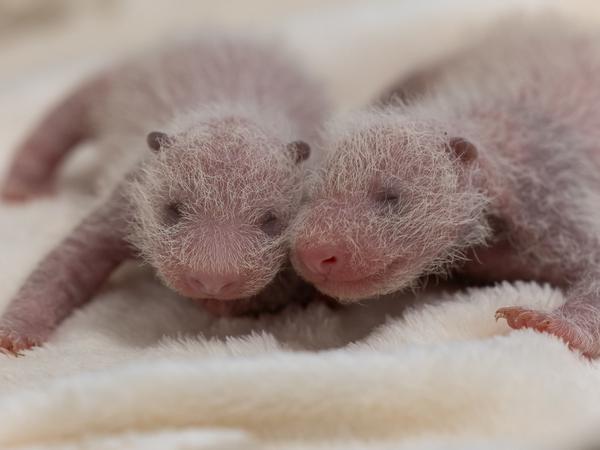
© dpa/-
The zoo says the reason for the black and white coloring of pandas is not scientifically clear. It is suspected that it serves as camouflage or to communicate with conspecifics.

© AFP/HANDOUT
The two as yet unnamed girls have two brothers: in 2019, eleven-year-old Meng Meng already had offspring. Pit and Paul developed into Favorites of zoo visitors, but returned to China at the end of last yearLike their parents, the small pandas belong to the People’s Republic, which only lends them to selected countries as part of the so-called panda diplomacy.

© AFP/HANDOUT
Two weeks after birth, the panda twins are developing splendidly, according to the zoo. “They have now more than doubled their birth weight and currently weigh 510 g and 450 g“, the zoo says. The typical black and white panda look is also becoming more and more prevalent.

© AFP/HANDOUT

© AFP/HANDOUT
In addition to the black ears and dark circles under the eyes will now also be a dark stripe on the shoulders of the once pink baby pandas. “We are extremely pleased with the development of the two little pandas,” says zoo director Andreas Knieriem.
In addition to the Weight control The team also paid attention to the body temperature of the young animals and supported digestion by gentle massages. (dpa, Tsp)
